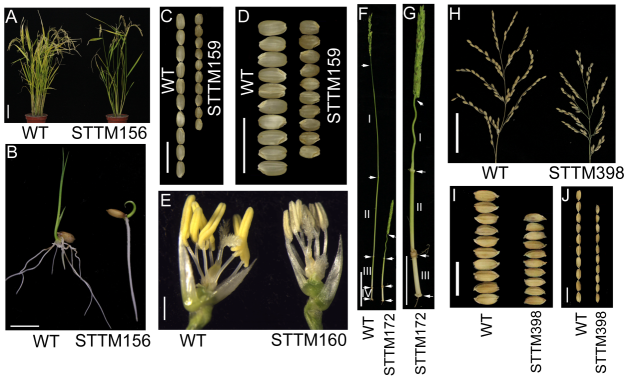
MicroRNA (miRNA) is one class of non-coding small RNAs that are universe in organisms and are about 21 nucleotides in length. miRNAs play an important role in regulating plant organ development, signal transduction and stress responses. Due to their small size and extensive genetic redundancy, it is difficult to study the function of miRNA through the traditional gene loss-of-function mutants.
Most of the current functional studies on miRNAs involve over expression of either miRNA precursor or miRNA-resistant target genes (miRNA-resistant). Whereas one miRNA usually regulates several target genes, these methods can only partially reveal the functions of miRNA.
Recent target mimicry technologies, such as target MIMICs (MIMs) and short tandem target MIMICs (STTMs), have provided effective tools to block endogenous mature miRNA activity, making it technically possible to undertake large-scale genome-wide studies.
The research group led by Prof. ZHU Jiankang at Institute of Plant Physiology and Ecology of Chinese Academy of Sciences produced a large collection of transgenic short tandem target mimic (STTM) lines silencing 35 miRNA families in rice as a resource for functional studies and crop improvement. This study was published in PNAS.
Visual assessment of field-grown miRNA-silenced lines uncovers alterations in many valuable agronomic traits, including plant height, tiller number, and grain number, that remain stable for up to five generations.
Their study not only discovered new roles of miRNAs, e.g. miR172 in culm development and panicle density and miR156 in root development, but also established miRNAs as an important target for crop improvement just like many transgenic lines showing changes in valuable agronomic traits.
As a proof of concept using newly gained knowledge on the miRNAs for crop improvement, they have chosen one of the miRNAs, miR398, for further study. The result shows that manipulation of miR398 can increase panicle length, grain number, and grain size in rice.
This study provides new insights into miRNA function in rice and a valuable resource for functional analysis of rice miRNAs, as well as for agronomic improvement that can be readily transferred to other important food crops.

Figure: Short tandem target mimic rice lines uncover important functions of miRNAs in regulating important agronomic traits. (Image by ZHU's group)

86-10-68597521 (day)
86-10-68597289 (night)

52 Sanlihe Rd., Xicheng District,
Beijing, China (100864)

